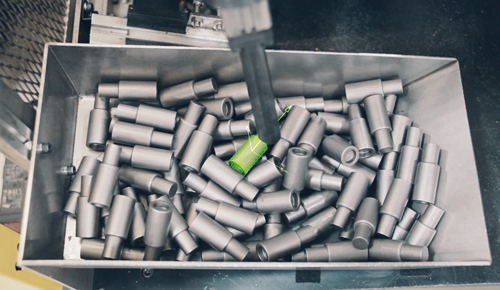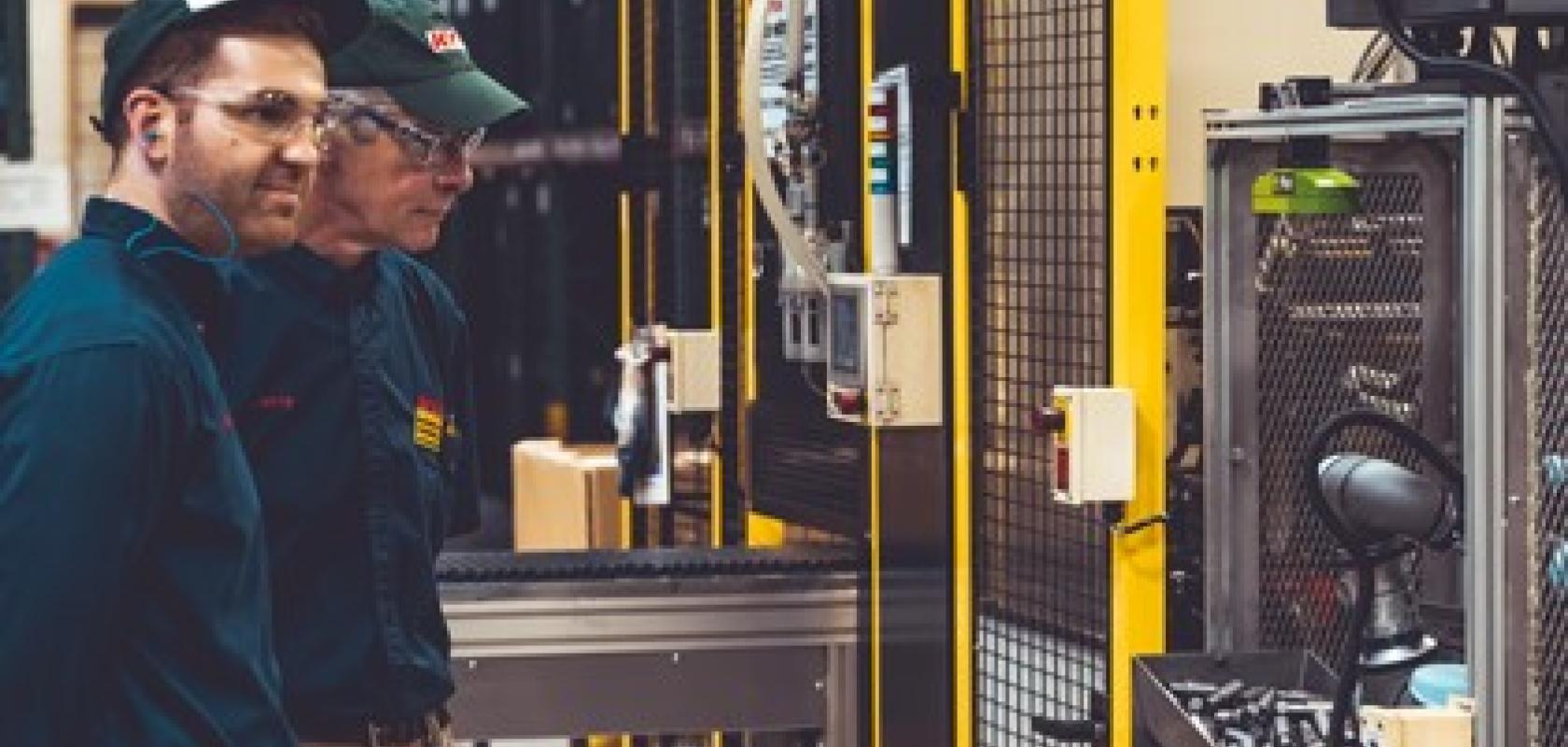The European Automobile Manufacturers’ Association expects a 25 per cent drop in EU car sales for 2020, equating to some three million fewer cars sold than in 2019.
The association says that the EU car market has contracted 41.5 per cent so far this year because of lockdowns halting production earlier in the year. In June registrations of new passenger cars in the EU were down 22.3 per cent compared to the same month last year; this is, however, an improvement over May, which saw a drop of 52.3 per cent in new car registrations. In April it was down 76.3 per cent.
There’s no doubt that the automotive industry has been hit incredibly hard by the coronavirus pandemic. Those asked in a survey conducted by the European Machine Vision Association (EMVA) named automotive as the most affected industry vertical that machine vision is sold into. And for a lot of vision firms automotive is a big market – Cognex puts the automotive sector as its largest market in 2019 – so there inevitably will be some impact on machine vision suppliers.
Most commentators, however, are reasonably positive about the prospects from automotive clients, in the long term at least. Jean-Philippe Roman, director of marketing and communications at Allied Vision, said that the shock to the automotive sector ‘might have a negative impact on the demand for vision systems in the short term, but the safety and quality requirements will certainly remain or even increase. We expect this industry to remain a key application market for vision.’
Hans Jürgen Christ, vice chairman in Isra Vision’s executive board, said that, so far, the firm has only ‘noticed slight effects from the virus’, in terms of the automotive projects it is involved in.
Some survey participants that the EMVA spoke to noted that the shutdown of automotive production lines offered ways to bring automation installations forward while the lines were inactive. However, Peter Soetens, CEO of 3D vision firm Pickit, made the point that ‘investment in automation typically happens when production increases, when companies want to output more parts or vehicles.’
He said: ‘Factories don’t tend to automate when demand is declining – the factory has lots of capacity, so why add another robot. That’s the short-term effect of Covid-19 on automotive production. In the long term, automotive plants are looking to automate processes to a greater extent.’
The vision installations that Pickit, Isra Vision, and Allied Vision have been involved in range from inspecting door panels or surface inspection in car paint shops, to pick-and-place applications working with small components. KYB in America, for example, which manufactures shock absorbers, installed an automated bin picking solution based on a robot arm from Universal Robots. The robot was programmed to pick steel metal cylinders from a bin and place them on a conveyor belt with the same orientation and position each time. The system used a Pickit 3D camera installed above the bin, which generates a 3D image using structured light.
Another example is Jinmyung Powertech in Korea, which makes power trains, and which installed an ABB robot to load parts into CNC machines for shaft production. Vacuum or magnetic grippers are typically used for picking up cylindrical parts, which avoids component collisions, but these grippers couldn’t place the parts precisely in the CNC machine. Therefore, the integrators chose a two-finger gripper and used a Pickit 3D camera to determine the best pick points without collisions.
Both Isra Vision and Pickit supply 3D vision solutions for pick-and-place applications, something that automotive customers want, according to Soetens, even if pick-and-place is not entirely solved yet. ‘Automotive customers need reliable solutions,’ he said, which can be measured in terms of how many parts are presented correctly to the next step in the process – the final output. To engineer a reliable pick-and-place solution means that a lot of things have to work together: 3D vision, but also the gripper and the robot’s cycle time. ‘Pick-and-place is only solved if these three things work together,’ Soetens added. ‘We are helping automotive companies with these three aspects of a robot solution, not just the 3D vision.’
Pickit typically specifies accuracy as process accuracy, so, for example, it would expect that by using the Pickit M camera the error on the gripper would be 3mm or lower. ‘That’s the total inaccuracy of the system, made up of the camera which might be inaccurate to 1mm, the gripper with an error of 1mm, and the robot with an error of 1mm,’ Soetens explained. ‘There’s no use in making a sub-millimetre camera if the gripper adds an error of a centimetre.’
A solution using the Pickit HD camera would have an accuracy of 1mm or less, using a precise robot and gripper. ‘There are automotive processes that need better than 1mm accuracy, but there are also many processes where 1mm is more than sufficient,’ Soetens said.
Isra Vision’s Hans Jürgen Christ noted that surface inspection techniques are also playing a bigger role in automotive production. Isra Vision has designed its Car Paint Vision (CPV) system, which combines a camera and high-speed lighting to detect topographical and non-topographical paint defects, such as inclusions, dents, scratches and pigment defects. The sensor module is attached to a robot arm to scan the bodywork either on-the-fly as the vehicle moves past, or in a stop-and-go process.
Going electric and car maintenance
Alongside the interruption in production caused by Covid-19, the automotive sector is also grappling with new manufacturing lines for electric vehicles. Jean-Philippe Roman at Allied Vision noted that investment in this technology continues to open up new opportunities for machine vision. Roman added that there are now vision systems used during the life cycle of a vehicle for its maintenance and repair. He gave the example of a system using structured light and multiple cameras that gives a 3D scan of a complete vehicle to identify dents and bumps. These are used by car rental or leasing companies as well as insurance firms to assess damage to vehicles.
Allied Vision has supplied cameras to a German firm, Adomea, for a system that scans a vehicle to check for damage from hailstones. The system has a transportable aluminium frame that fits over the vehicle; the surface of the vehicle is then illuminated by pattern projectors, while 17 high-resolution cameras from Allied Vision record its exterior. The cameras are synchronised using the precision time protocol, and the images analysed with Adomea’s damage analysis software.

A Pickit 3D camera instructs a robot gripper which cylinder to pick up next in a solution developed for KYB. Credit: Pickit
Quality inspection will continue to play a big role in car production, while advanced automation techniques like robot pick-and-place show a lot of promise. Pickit’s Soetens said that bin picking has suffered, in some respects, from a lack of reliability in the solution as a whole, and that reaching this level of reliability is an incremental process that takes a certain amount of expertise. Pickit is trying to shorten this learning curve: ‘We can talk about what we can do with vision, but people often overestimate the effort needed to implement a vision system and underestimate the effort needed for gripper design,’ Soetens said.
He noted that Pickit has identified a number of applications where it’s easy to get a stable gripper, and some applications where it’s harder.
Soetens concluded: ‘A lot of vision companies make the mistake that they prove that the vision works, but the solution as a whole is not solved. The solution is more than vision alone.
‘Improving the reliability of the solution as a whole will help tremendously with uptake of bin picking. Camera technology and algorithms will improve, but that on its own will not be sufficient.’


